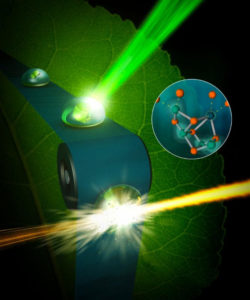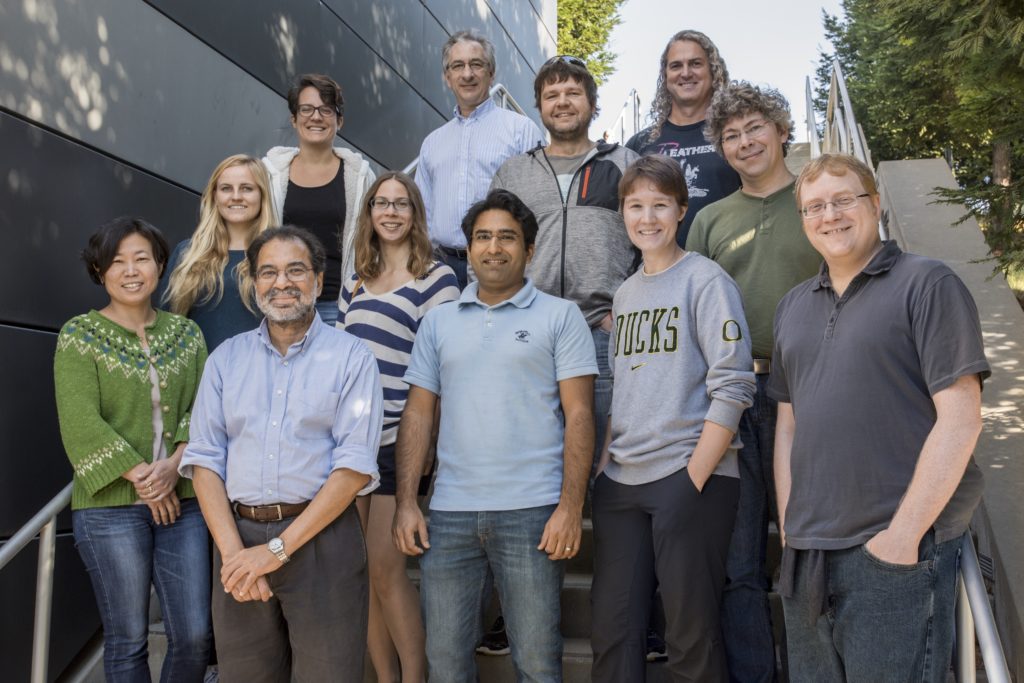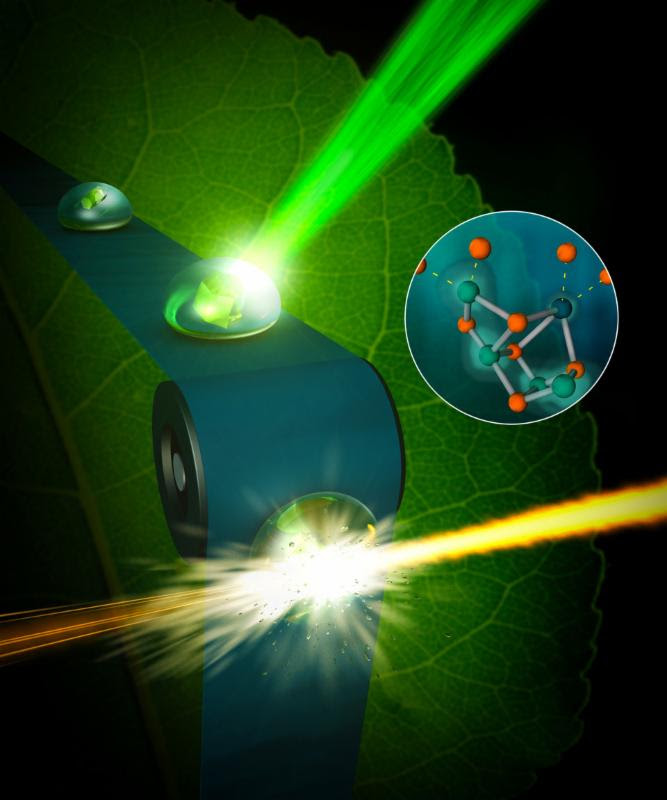 An international team of scientists is getting closer to discovering how plants split water during photosynthesis and produce nearly all of the oxygen in our atmosphere. Thanks to unprecedented, atomic-scale images of a protein complex found in plants, algae, and cyanobacteria captured by ultrafast X-ray lasers, researchers conducted atomic-level experiments to help delineate the mechanism of this system that also yields the protons and electrons used to reduce carbon dioxide to carbohydrates later in the photosynthesis cycle.
An international team of scientists is getting closer to discovering how plants split water during photosynthesis and produce nearly all of the oxygen in our atmosphere. Thanks to unprecedented, atomic-scale images of a protein complex found in plants, algae, and cyanobacteria captured by ultrafast X-ray lasers, researchers conducted atomic-level experiments to help delineate the mechanism of this system that also yields the protons and electrons used to reduce carbon dioxide to carbohydrates later in the photosynthesis cycle.
The effort to uncover the secrets of this protein complex, photosystem II, was led by Vittal Yachandra and Junko Yano in the Molecular Biophysics & Integrated Bioimaging (MBIB) Division and the team’s findings were published this week in Nature. Many others in MBIB contributed to the study, including Nicholas Sauter and Paul Adams and their respective groups, who developed software algorithms for translating the diffraction readings taken at the SLAC National Accelerator Laboratory into the 3-D rendering of photosystem II. Other researchers on the team were from Humboldt University of Berlin in Germany, Uppsala University and Umeå University in Sweden, SLAC and Stanford University, Brookhaven National Laboratory, and the University of Oxford. To learn more about this work, watch the video produced by SLAC and read the press release in the Berkeley Lab News Center.
Some of the Berkeley Lab contributors are pictured below: Louise Lassalle (top row, from left) , Nicholas Sauter, Pavel Afonine, Nigel Moriarty, Jan Kern, Lacey Douthit (middle row, from left), Dorothee Liebschner, Junko Yano (front row, from left), Vittal Yachandra, Sheraz Gul, Iris Young and Aaron Brewster (absent: Ruchira Chatterjee, Franklin Fuller, Rosalie Tran, Tara Michels-Clark, Claudio Saracini, Mackenzie Bean, Ernest Pastor, Peter Zwart and Paul Adams).





